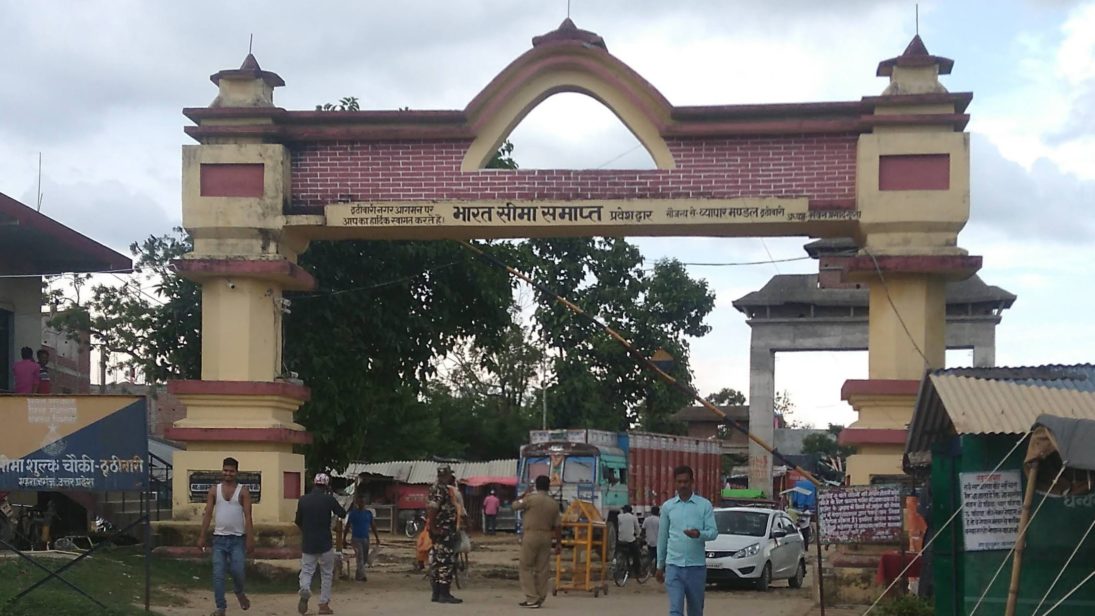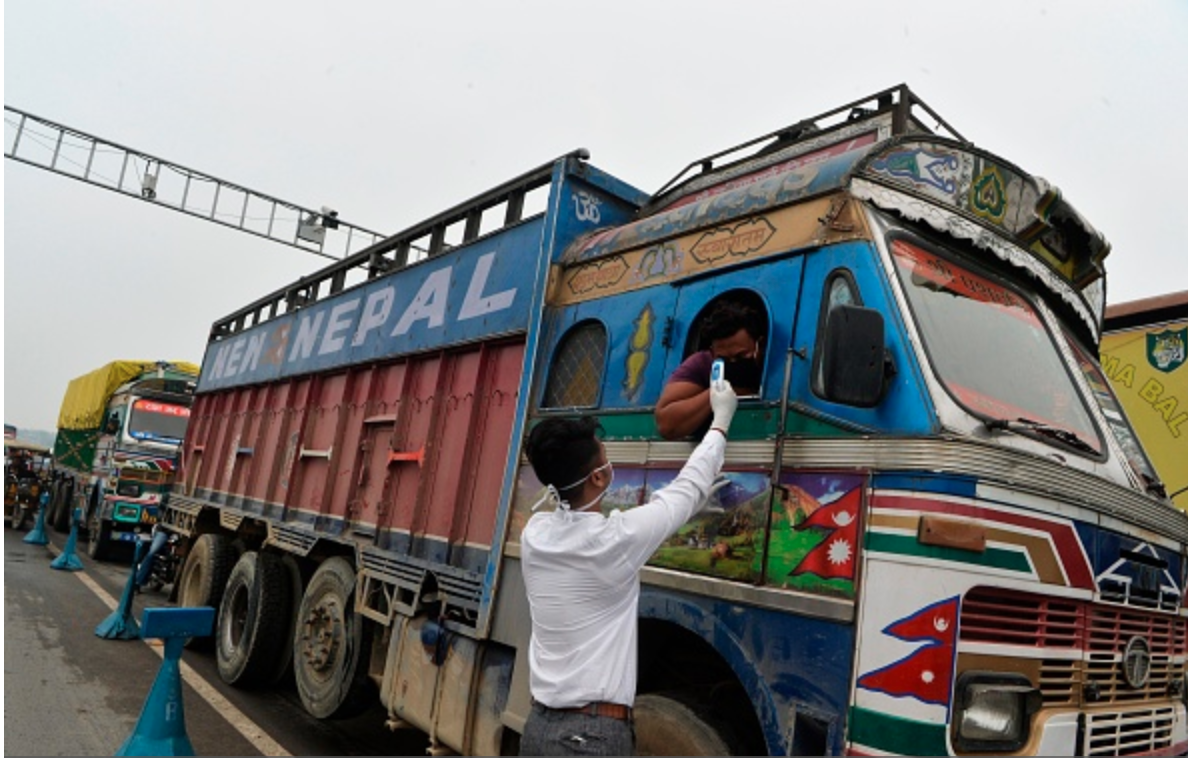
This June, Nepal amended its constitution to depict Limpiyadhura, Lipulekh, and Kalapani – areas disputed with India – within Nepali territory. The current border dispute between the two countries has seriously affected their relation, which is marked by an open border, cultural proximity, geographical linkages, and interpersonal ties.
The latest episode of border disputes erupted in November 2019, when India released a political map placing the Nepali territory of Kalapani within its territory. Objecting to the political map, Nepal’s government immediately sent a diplomatic note urging India to discuss the issue, but there was no progress on establishing a dialogue. Amid uncertainty over the dialogue, the Indian Defense Minister inaugurated a road in the Indian state of Uttarakhand via the disputed Lipulekh pass. Nepal again sent a diplomatic note stating that such a unilateral action by India in the disputed territory is a violation of Nepal’s past understanding to resolve issues through diplomatic means. Most recently, however, after India again refused to sit for a dialogue, Nepal amended its constitution to mark its territorial claim. On August 15, despite a lack of dialogue on the border, Nepali Prime Minister KP Sharma Oli called Indian Prime Minister Narendra Modi for Independence Day. And on August 17, Indian Ambassador to Nepal Vinay Mohan Kwatra met with Nepali Foreign Secretary Shankar Das Bairagi.
Now that these territories have become an integral part of Nepal’s constitution, Nepal is unlikely to change their statuses in the near future. India has called Nepal’s new political map an artificial enlargement. Although several bilateral projects currently exist—including the investments, water resources, defense cooperation, partnerships in education, and flood management—the border dispute is unlikely to resolve itself soon, which could prolong friction in the bilateral relationship writ large. Political parties in both countries may begin to use the border dispute as a political tool to advance their internal positions, further undercutting ties.
Points of Contention in the Border Dispute
The border dispute is unlikely to resolve itself soon, which could prolong friction in the bilateral relationship writ large. Political parties in both countries may begin to use the border dispute as a political tool to advance their internal positions, further undercutting ties.
The boundary dispute between Nepal and India envelops a range of larger geopolitical phenomena on the subcontinent, including historical demarcations, the presence of Indian troops, and China factor.
First, the Nepali government’s claim to the territory relies on historical documents that include contentious geographical information. These documents discuss people in the disputed Kalapani area voting in the national election in 1959 and participating in revenue collection in 1961. Based on the Sugauli Treaty of 1861 which determined the Nepal and then-British India border, Nepal’s Foreign Minister Pradeep Gyawali said, “We have told them [India] to accept, and respect the historical facts…that Nepal’s western border is the Kali River.” Although Nepal states that the Kali River originates from Limipiyadhura, India contests the origin as it would prove that the region belongs to Nepal. Nepal now believes that India is creating an artificial Kali River to claim the territory and is prepared to send its updated map to the United Nations and other international organizations.
Second, Nepal has long resented that India deployed its troops in Kalapani after the India-China War in 1962 and has not removed these troops despite Nepal repeatedly asking. Originally, after the war, India deployed troops in Kalapani because of its strategically important location vis-a-vis China. This issue has only grown more complicated in the absence of effective political dialogue channels. Nepal’s current Prime Minister KP Sharma Oli has publicly said that India created the dispute by keeping its army there and is asking India to withdraw its forces to respect Nepal’s sovereignty.
Third, the increasing role of China weighs heavily on the Nepal-India border disputes. China claims that the dispute is a bilateral issue requiring a resolution between the two countries but has also supported Nepal. The Chinese Ambassador has said: “the Chinese side has always respected [the] sovereignty and territorial integrity of the Nepali side.” Perhaps because of comments like these, many in New Delhi claim that Nepal raised the border dispute following Chinese pressure. For example, experts believe that China could “use Nepal as another pressure point for India to be able to extract some concessions from India and strengthen its relations with Nepal.” In response, Nepal asserts that it raised the issue independently without any foreign pressure. In fact, Nepal also has reservations with China, because India and China agreed in 2015 to use the disputed Lipulekh areas as a trading pass without consulting Nepal. In response to Nepal objecting to this decision, China said that its position on the disputed area has not changed, but remains unclear what this position is.
All of these developments have pressed Nepal’s government to conduct its diplomacy more cautiously. Primarily, amid the India-China standoff, Nepal’s government has to work hard to balance its relationship between the two powers. Nepal has always faced pressures to take sides but has historically maintained a neutral position in the conflict between the two countries. However, if the India-China standoff should escalate, experts say that Nepal might have to pick between India and China. Although unlikely, this could cause India-Nepal bilateral relations to deteriorate given the border dispute.

Dialogue as the Way Forward
While the border dispute is unlikely to resolve itself soon—because of both countries’ hardened positions—opening a dialogue might serve as a successful way forward. Provocative statements from politicians on both sides have not created a conducive environment for the talks. Meanwhile, Nepal is unlikely to change its constitution again and remains fully optimistic that it can convince India to withdraw its troop from Kalapani, while India seems unwilling to remove its troops because of the region’s strategic significance.
Finding a solution in the immediate future thus appears quite slim, but it is clear that communication between the two countries must improve to begin working on one. Both countries should open a comprehensive bilateral political dialogue—including and especially to address the border dispute issue—to rebuild trust. This type of comprehensive dialogue would help cultivate an environment of trust necessary to resolve the border issue. In order to resolve the border issue, two countries first need to build an environment of trust at the highest political echelons.
A comprehensive bilateral political dialogue would help cultivate an environment of trust necessary to resolve the border issue. In order to resolve the border issue, two countries first need to build an environment of trust at the highest political echelons.
Both countries need to collaborate more closely to contain the spread of COVID-19, particularly given their open border. Lacing the border dispute issue within a dialogue on this more immediately necessary and collaborative discussion might mitigate the contentious nature of a dialogue solely on that issue.
In the past, despite their differences, both sides were able to move forward and resolve their existing issues, but this time, there are worrying signs that the relationship could take a turn from bad to worse. In response to Nepal’s repeated offers for dialogue, New Delhi should take the initiative to resume dialogues between the two countries. While mapping the way forward, the countries need to focus on dialogue over disputes.
Both sides should take sufficient time to address mutual perspectives on the border issue, and, if necessary, form a technical panel to collect evidence on claims, counter claims and schedules. At the moment, it seems that only mutually satisfactory option is the withdrawal of Indian forces from Kalapani. Subsequent discussions may address possible alternatives, in the event that India challenges the Sugauli Treaty placing the territories under Nepal’s orbit. India had, after the treaty, nonetheless kept a troop presence in the aftermath of the India-China 1962 war. Both countries’ current positions make it difficult to gauge the value of alternatives anytime in the near future—Nepal is likely to continue insisting on a withdrawal of Indian troops. A few rounds of talks will help both countries assess whether they can effectively resolve a border dispute in this manner.
***
Image 1: Wikimedia Commons
Image 2: Diptendu Dutta/AFP via Getty Images


